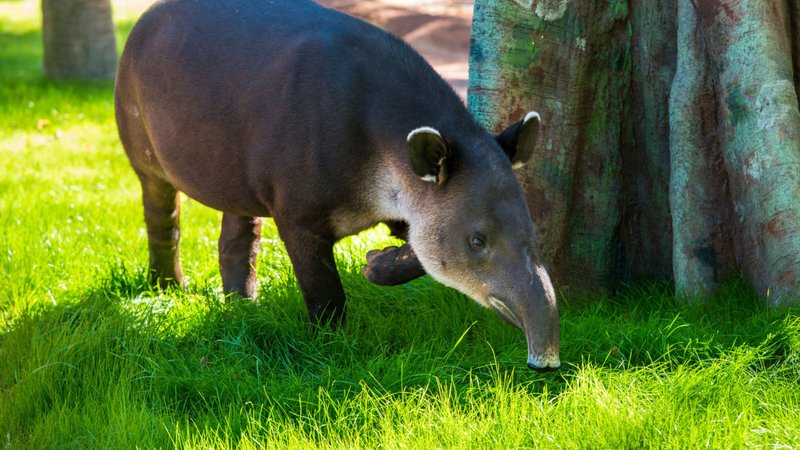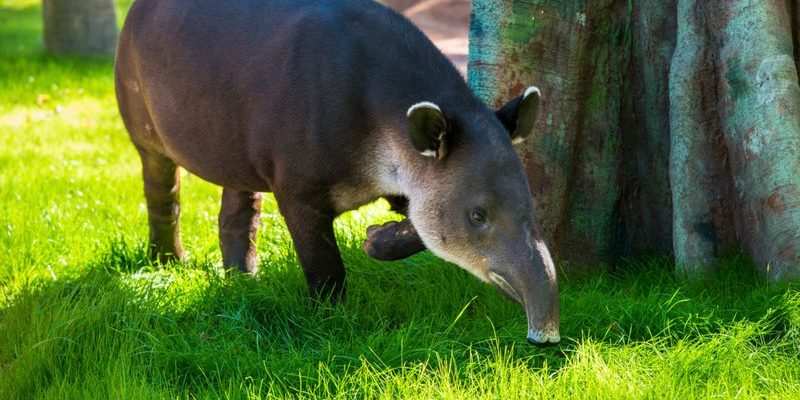
Baird’s tapirs, with their stocky bodies and distinctive markings, play a vital role in their ecosystem, acting as seed dispersers. Their presence helps maintain the health of the forests they inhabit. Yet, like many wildlife species, they are threatened by habitat loss, hunting, and climate change. In this article, we’ll unravel the situation surrounding Baird’s tapirs and what’s being done to protect them.
What Makes Baird’s Tapirs Unique?
Baird’s tapirs, scientifically known as *Tapirus bairdii*, are the largest land mammals in Central America. They can weigh between 400 to 900 pounds and are about the size of a small pony. With their rounded bodies, thick skin, and a distinctive, flexible snout, they remind us of a living, breathing piece of prehistoric history.
These gentle giants are primarily nocturnal, meaning they’re most active at night. They thrive in rainforest environments, where they can find plenty of fruit, leaves, and aquatic plants to munch on. Imagine wandering through a vibrant jungle, hearing the rustle of leaves as this elusive creature quietly goes about its evening meal. It’s a reminder of the rich biodiversity found in these ecosystems, where every species plays a role.
Baird’s tapirs are solitary by nature, often wandering alone or in small groups, typically a mother and her young. Their shy demeanor and knack for camouflage help protect them from predators. However, their unique lifestyle also makes them vulnerable—since they don’t gather in large groups, their numbers can dwindle quickly if their environment is threatened.
The Endangered Status of Baird’s Tapirs
Baird’s tapirs are classified as *Endangered* by the International Union for Conservation of Nature (IUCN). This designation highlights the urgent need for conservation efforts. But what does “endangered” really mean? It means that the Baird’s tapirs face a high risk of extinction in the wild. The current population is estimated to be fewer than 5,000 individuals—a staggering number when you think about it.
The main culprits behind their declining numbers are habitat loss and hunting. As forests are cleared for agriculture and urban development, tapirs lose their homes and the food sources they rely on. Additionally, in some regions, they are hunted for their meat and skin, further reducing their numbers. The situation is dire, and it highlights the important question: how can we protect these gentle creatures?
Threats Facing Baird’s Tapirs
Let’s break down some of the key threats to Baird’s tapirs:
- Habitat Loss: Deforestation for agriculture, logging, and urban development leads to shrinking habitats.
- Hunting: In some regions, local communities hunt tapirs for food, further endangering the population.
- Climate Change: Changes in climate can alter their habitats and food sources, making survival more challenging.
To add a little context, think of the Baird’s tapir as a piece of a jigsaw puzzle. When one piece is removed—like when forests are cut down—the entire picture becomes incomplete. The loss of tapirs not only affects their species but also disrupts the ecosystem services they provide, like seed dispersal, which helps maintain the diversity of plant life in their environment.
Conservation Efforts for Baird’s Tapirs
Conservationists are stepping up to protect Baird’s tapirs, and their efforts are crucial. Programs aimed at habitat preservation and community awareness are essential. Here are some key initiatives:
- Protected Areas: Establishing national parks and reserves helps safeguard the natural habitats of Baird’s tapirs.
- Community Involvement: Engaging local communities in conservation efforts creates awareness and encourages sustainable practices that benefit both people and wildlife.
- Research and Monitoring: Ongoing research helps track tapir populations and understand their needs, informing better conservation strategies.
One shining example is the work being done in countries like Costa Rica, where conservation groups are actively working to create corridors that connect fragmented habitats. It’s like building bridges in a divided landscape—allowing tapirs and other wildlife to move freely, find mates, and thrive.
What Can You Do to Help?
You might be wondering how you can contribute to the conservation of Baird’s tapirs. Here are a few simple ways:
- Spread the Word: Share information about Baird’s tapirs on social media to raise awareness.
- Support Conservation Organizations: Consider donating to groups focused on wildlife conservation.
- Practice Sustainable Living: Reduce your environmental footprint by being mindful of your consumption and waste.
Each small action adds up—like drops of water filling a bucket. By raising awareness and supporting conservation efforts, we become part of a larger movement to protect not just Baird’s tapirs but the rich biodiversity of our planet.
The Future of Baird’s Tapirs
The future of Baird’s tapirs hinges on our actions today. With concerted conservation efforts and public awareness, there’s hope for this remarkable species. While challenges remain, the strides being taken in protecting their habitats and engaging communities are promising. It’s essential that we remain vigilant and proactive in our efforts to ensure Baird’s tapirs don’t disappear from our world.
Imagine passing down the stories of these gentle giants to future generations, sharing tales of their uniqueness and importance in the ecosystem. That’s a future worth fighting for, don’t you think?
In closing, Baird’s tapirs, like many species on our planet, need our attention and action. Whether it’s through supporting conservation efforts, spreading awareness, or simply learning more, we can all play a part. Every little bit helps in protecting these incredible animals and the habitats they call home. Let’s work together to ensure that the Baird’s tapir remains a part of our world for years to come.

